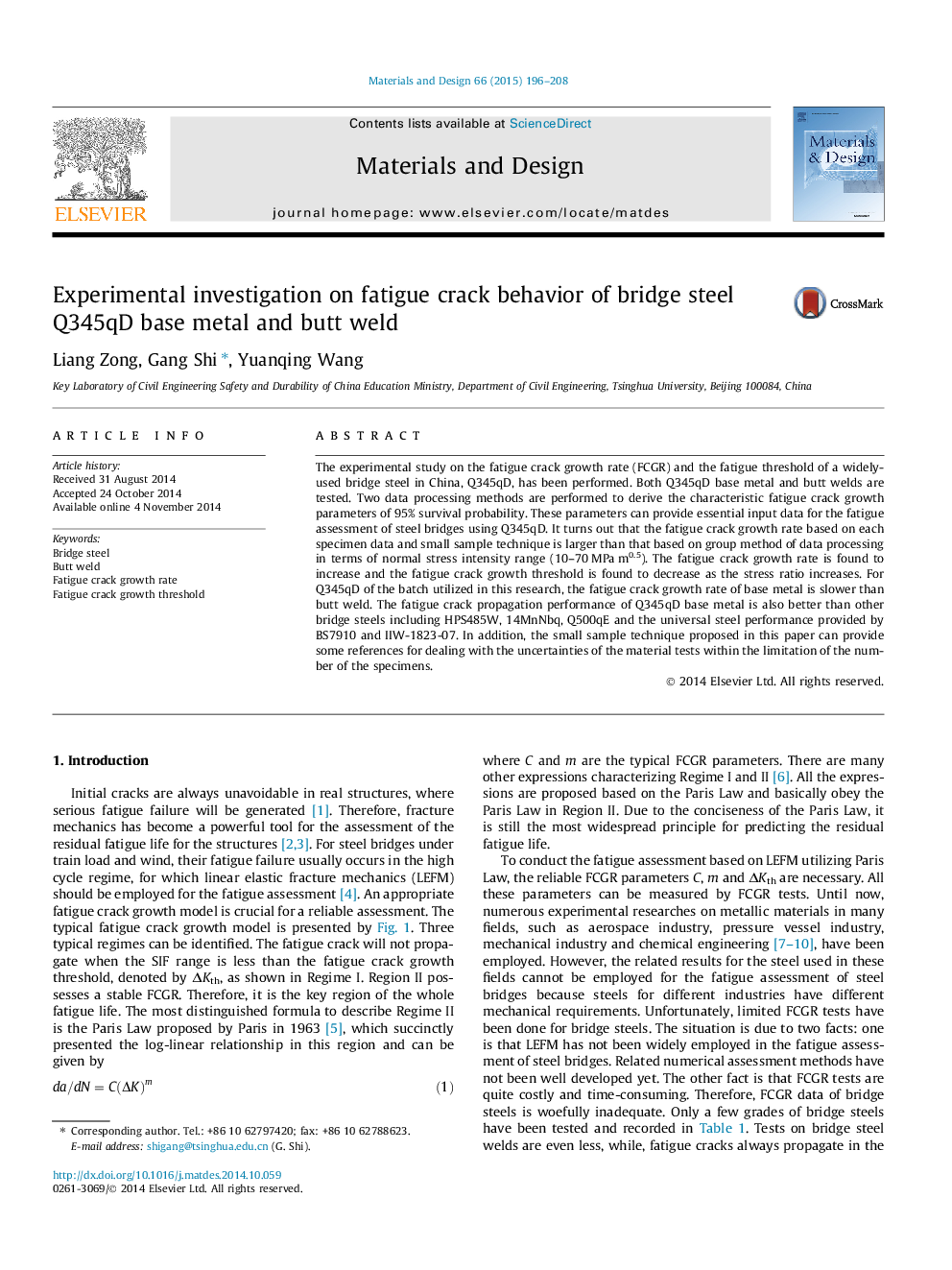| Article ID | Journal | Published Year | Pages | File Type |
|---|---|---|---|---|
| 10426498 | Materials & Design (1980-2015) | 2015 | 13 Pages |
Abstract
The experimental study on the fatigue crack growth rate (FCGR) and the fatigue threshold of a widely-used bridge steel in China, Q345qD, has been performed. Both Q345qD base metal and butt welds are tested. Two data processing methods are performed to derive the characteristic fatigue crack growth parameters of 95% survival probability. These parameters can provide essential input data for the fatigue assessment of steel bridges using Q345qD. It turns out that the fatigue crack growth rate based on each specimen data and small sample technique is larger than that based on group method of data processing in terms of normal stress intensity range (10-70 MPa m0.5). The fatigue crack growth rate is found to increase and the fatigue crack growth threshold is found to decrease as the stress ratio increases. For Q345qD of the batch utilized in this research, the fatigue crack growth rate of base metal is slower than butt weld. The fatigue crack propagation performance of Q345qD base metal is also better than other bridge steels including HPS485W, 14MnNbq, Q500qE and the universal steel performance provided by BS7910 and IIW-1823-07. In addition, the small sample technique proposed in this paper can provide some references for dealing with the uncertainties of the material tests within the limitation of the number of the specimens.
Related Topics
Physical Sciences and Engineering
Engineering
Engineering (General)
Authors
Liang Zong, Gang Shi, Yuanqing Wang,
